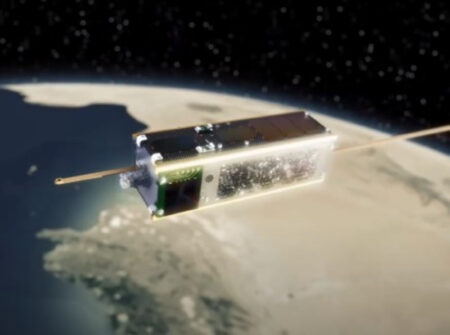
The study was based on the following of a satellite over almost six years, observing how the panels generated power and weathered solar radiation over 30,000 orbits.
In particular, the researchers found that the solar cells showed no signs of cell delamination and no deterioration in short circuit current or in series resistance.
However, the cell’s fill factors were observed to decrease over the duration of the mission, caused primarily by a decrease in their shunt resistance, which has been attributed to an aspect of the cell design.
“We are very pleased that a mission designed to last one year is still working after six,” said Professor Craig Underwood, Emeritus Professor of spacecraft engineering at the Surrey Space Centre (SSC) at the University of Surrey and the lead author of the report.
“These detailed data show the panels have resisted radiation and their thin-film structure has not deteriorated in the harsh thermal and vacuum conditions of space… Now we have the first evidence that the technology works reliably in orbit.”
The new solar cell technology, which is being developed at the Centre for Solar Energy Research at Swansea University, is based on thin-film cadmium telluride (CdTe), deposited directly onto ultra-thin space qualified cover glass material.
This offers a potentially high specific power and when adopting the conventional CdTe manufacturing process, a low-cost technology.
With the ultra-thin glass, a solar cell can be produced which is sufficiently flexible to allow the ‘roll-out’ deployment strategies in space that would be required.
Four prototype cells were flown as part of the Thin-Film Solar Cell (TFSC) experimental payload on the joint Algerian Space Agency (ASAL)–UK Space Agency AlSAT-1N technology demonstration CubeSat, which was designed and built at the Surrey Space Centre and launched on 26 September 2016.
The researchers believe that despite the cells’ power output becoming less efficient over time, the technology could be commercially viable.
With the decrease in the shunt resistance attributed to the diffusion of gold atoms from the back electrical contacts, they intend to utilise more stable back contacting methodologies more commonly employed for terrestrial CdTe modules.
Commenting that the successful flight test of the solar cell technology has leveraged the funding opportunities to further develop it, Dr Dan Lamb, project manager in Swansea’s CSER, says: “Large area solar arrays for space applications are a rapidly expanding market and demonstrations such as this help to build on the UK’s world class reputations for space technology.”